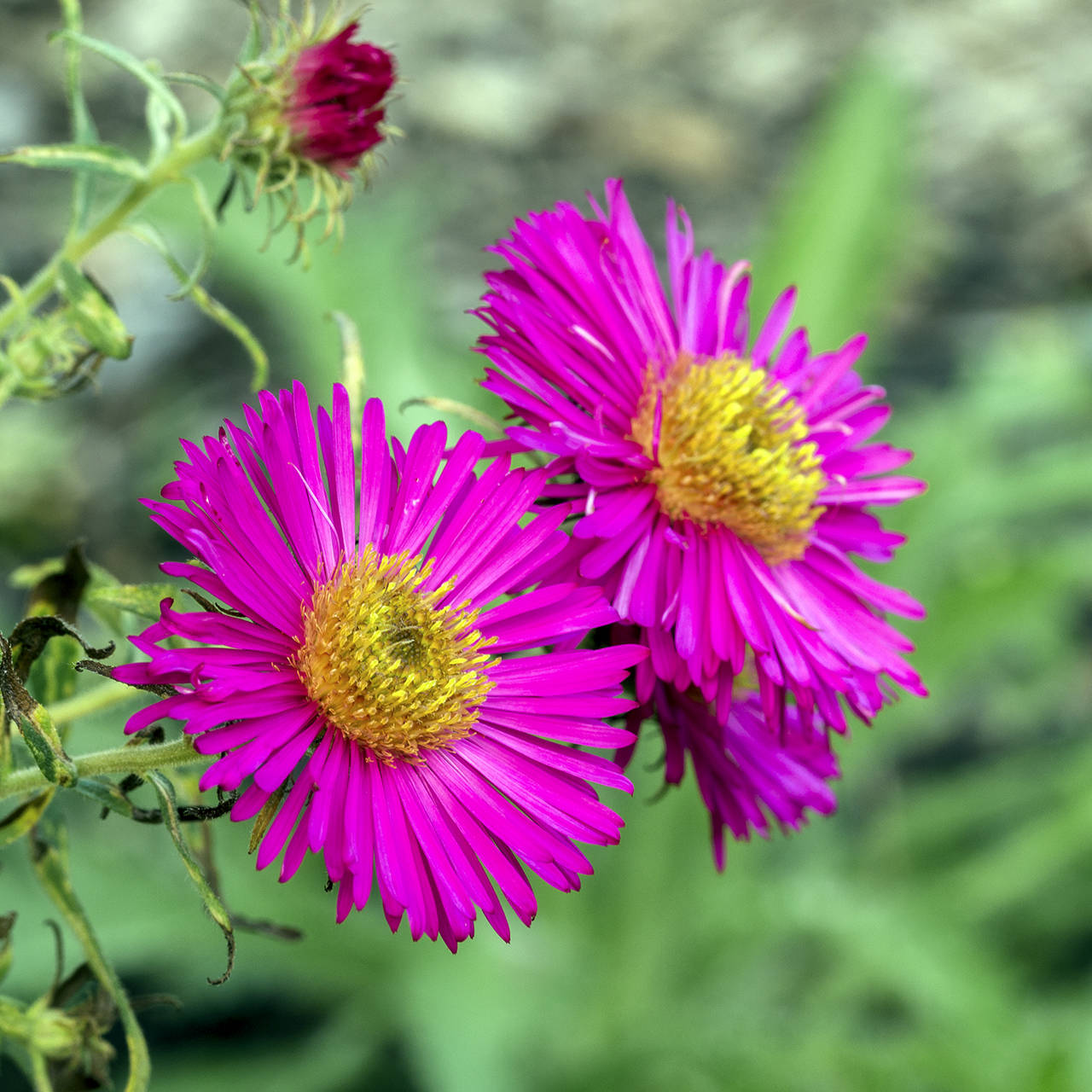Known as “pillars of the fall garden,” Michaelmas daisies (or asters) are always dependable for a stunning late-season scene. They offer a myriad of vibrant colors ranging from white to pastel blues, lilac or pink, and hybrids of deep scarlet to purple — most all with central disks that are golden.
Asters play an almost invisible role throughout spring and summer, often being merely the plant next to the one that is blooming. But the wait is worth it; it is truly the Late Show.
Asters attract beneficial insects, bees and butterflies and are virtually pest-free. The ancient Greeks believed they repelled snakes and provided an antidote to their venom.
Most asters are perennials; they die to the ground at the end of the growing season, then start fresh at the beginning of spring. Many asters are North American natives and grow in wayside places with no care at all. I have spotted them along the roadside between Montesano and Westport.
There are approximately 250 types of asters. Many are native to North America as well as South America, Eurasia, Siberia, China and Japan.
Bloom time is usually from August through October, depending on the species and cultivar. They grow in zones ranging from 3 to 10 and are mostly frost-tolerant. Most asters range from 1 to 4 feet tall, with some reaching 6 feet. The typical spread is 1 to 3 feet. Most blooms are relatively small, from a half-inch to 2 inches in diameter.
Michaelmas daisies grow best in full sun and in good soil but can tolerate sandy and clay soils as well. They can be divided every three years. Tall asters can be pinched back hard in midsummer, promoting branching and flowering on shorter stems that need no staking.
Asters can be planted anytime from spring through fall and can be placed in containers using a lightweight potting mix with good drainage. They require minimal watering unless there are drought conditions, or if they show signs of stress.
Taller stemmed varieties may require staking. A light application of an organic fertilizer at the start of the growing season is all that is necessary.
Propagation by division is a way to increase your plants. Do it in spring just as new shoots are emerging.
New England asters (Symphyotrichum novae-angliae) are native from Vermont to Alabama and west to North Dakota, Wyoming and New Mexico. Stout-stemmed plants 3 to 5 inches tall and almost as wide have blooms that are violet blue in basic form with others in blue shades, white, pink, nearly red and deep purple. Two favorites are Alma Potschke and Harrington’s Pink, each with clear pink single flowers.
The New York aster, Aster novi-bellgii, is native to eastern North America (Zones 1-24). It grows 4 feet wide and 3 feet tall with full clusters of bright blue-violet flowers.
Among the many choices of A. novi-belgii are Persian Rose (rose pink) and semi-double Professor Kippenburg (lavender blue). The robust Climax variety bears large sprays of single medium-blue blossoms on stems 6 feet tall.
Aster x frikartii Monch, native to the Himalayas, is planted in other parts of the perennial beds in my garden. It is upright 16 inches tall and wide with purple blue sprays of 2-inch-wide flowers. Their growth habit differs a bit from many of the above plants and are the finest, most useful and widely adapted of perennials.
In large borders or among shrubs, tall asters with their abundant color are invaluable as companion plantings. Hardy chrysanthemums and asters are complementary with their contrasting colors of peach, yellow and rusty reds. Clouds of coreopsis, switch grass and other grasses, black-eyed Susans (Rudbeckia) and the burgundy seed pods of penstemons add to the color until frost arrives. Massing several plants of some of these varieties together creates a delicate balance.
At season’s end, a carefully planned palette transitions to blue, gold and burgundy and a colorful finale as winter approaches.
This article, by Master Gardener Dolores Cavanah, is part of an occasional series in which she describes the plants she most admires at her expansive garden at Schafer Meadows, east of Montesano. Visit her during the 2020 WSU Master Gardener Garden Tour on July 18.


